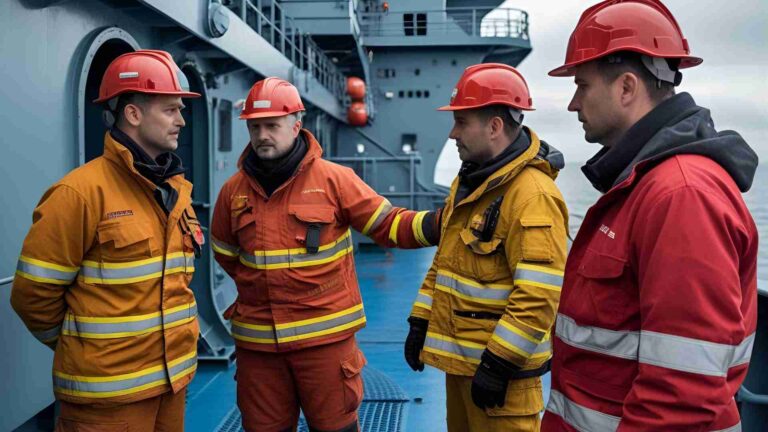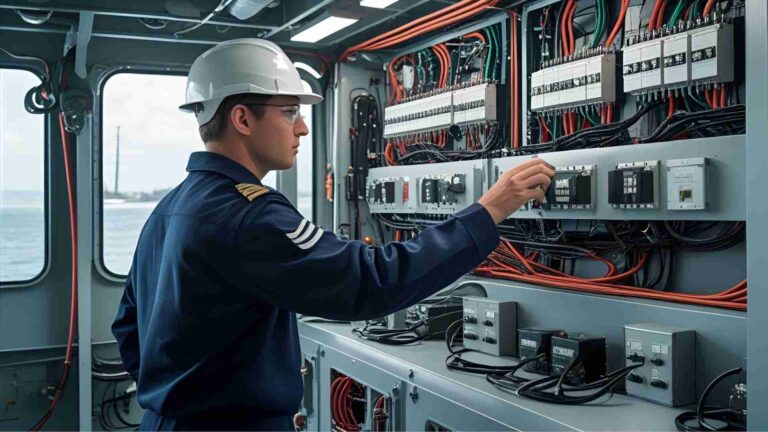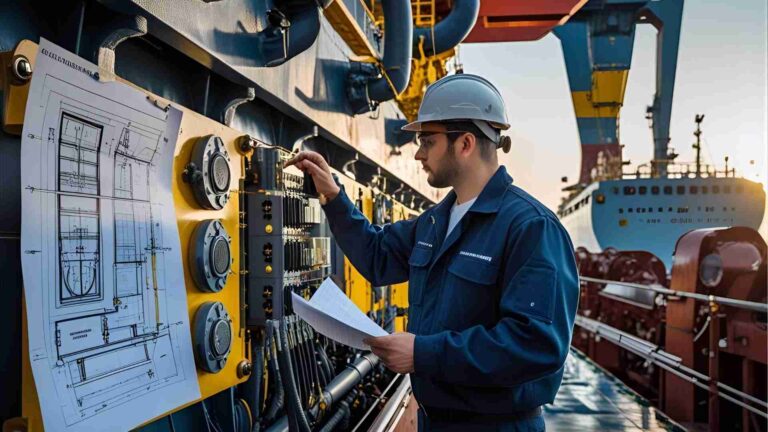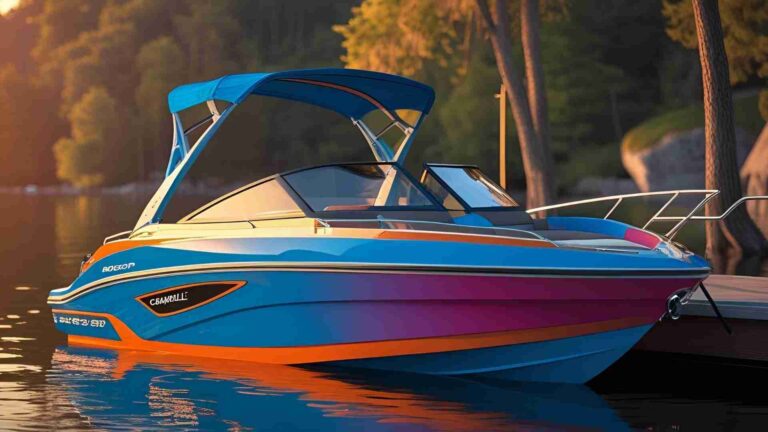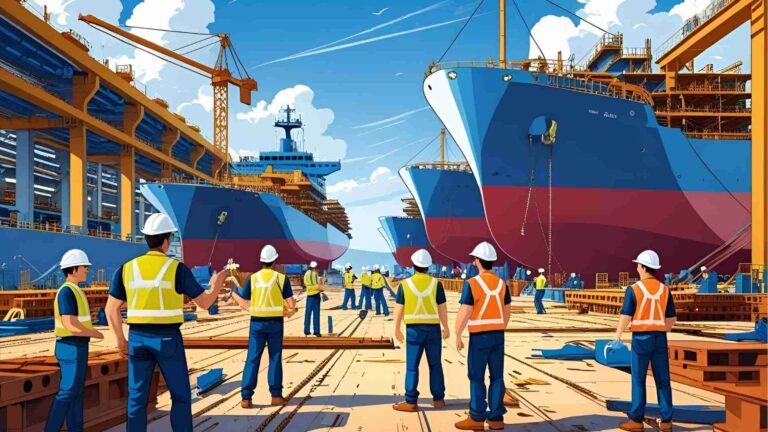Understanding the Basics of Marine Engineering
Explore marine engineering basics, ship propulsion systems, and trends like green tech. Learn roles, systems, and career paths in this vital industry.
Marine engineering is the backbone of the maritime industry, powering the global movement of goods, people, and resources across oceans. From colossal container ships to sleek naval vessels, marine engineers ensure vessels operate efficiently, safely, and sustainably. This article dives deep into the essentials of marine engineering, focusing on ship propulsion systems, auxiliary machinery, safety protocols, and emerging trends like green propulsion. Whether you’re a student, professional, or enthusiast, this comprehensive guide illuminates the heart of maritime operations.
What is Marine Engineering?
Marine engineering is a specialized discipline that involves the design, construction, operation, and maintenance of shipboard systems, with a primary focus on propulsion, power generation, and auxiliary machinery. Marine engineers work in the engine room, often described as a ship’s beating heart, ensuring vessels remain operational under demanding conditions. Their expertise spans mechanical, electrical, and environmental systems, making them indispensable to maritime safety and efficiency.
Unlike naval architects, who design a ship’s structure and layout, marine engineers focus on the systems that keep vessels moving and functional. Their work ensures compliance with international regulations, such as those set by the International Maritime Organization (IMO), while addressing modern challenges like emission reduction and automation.
Core Components of Marine Engineering
Marine engineering encompasses several critical systems, each integral to a vessel’s operation. Below, we explore the key components, starting with the most vital: propulsion systems.
Ship Propulsion Systems
Propulsion systems generate the thrust needed to move a vessel through water, relying on Newton’s third law of motion—for every action, there is an equal and opposite reaction. These systems vary widely, from traditional diesel engines to cutting-edge hybrid designs. Below are the main types of marine propulsion systems, their mechanisms, and applications.
1. Diesel Engines
Diesel engines dominate marine propulsion due to their efficiency and versatility. They power everything from small recreational boats to the world’s largest container ships. Two-stroke diesel engines are common in large merchant vessels for their high power output, while four-stroke engines are used in smaller crafts for better fuel economy.
- Mechanism: Diesel engines drive a crankshaft connected to a propeller, either directly or through reduction gears. The combustion of diesel fuel generates mechanical energy, turning the propeller to create thrust.
- Applications: Container ships, bulk carriers, tankers, and ferries.
- Example: Wärtsilä’s 14RT-flex96C, the largest diesel engine, delivers over 80,000 kW (107,000 HP) for mega-container ships.
2. Diesel-Electric Propulsion
In diesel-electric systems, diesel engines power generators that produce electricity to drive electric motors connected to the propeller. This setup offers flexibility in power distribution and is ideal for vessels requiring precise control.
- Mechanism: Multiple diesel generators supply electricity to propulsion motors, which drive the propeller directly or via gears. Speed-controlled AC motors enhance efficiency.
- Applications: Cruise ships, research vessels, mega yachts, and offshore support vessels.
- Advantages: Reduced fuel consumption, lower emissions, and enhanced maneuverability.
3. Steam Propulsion
Steam propulsion, once the standard for ships like the Titanic, uses steam turbines to drive propellers or generators. While largely replaced by diesel engines, steam systems remain in use in specialized vessels.
- Mechanism: Steam expands through turbines, rotating them to power propellers (direct propulsion) or generators (turboelectric propulsion). Heat is typically generated by burning fuel, though nuclear reactors are an alternative in naval ships.
- Applications: LNG carriers, icebreakers, and some naval vessels.
- Note: Modern steam turbines are regaining interest due to efficiency improvements in LNG applications.
4. Gas Turbine Propulsion
Gas turbines, borrowed from aerospace technology, offer high power in a lightweight package. They compress air, mix it with fuel, and ignite it to drive turbines, producing thrust or mechanical power.
- Mechanism: Compressed air and fuel combustion drive a turbine, which powers the propeller via gears or generates electricity for electric drives. Exhaust gases exit at high velocity, contributing to propulsion.
- Applications: Naval warships, fast ferries, and high-speed cruise ships.
- Challenges: High initial costs and fuel consumption make them less common in commercial shipping.
5. Nuclear Propulsion
Nuclear propulsion uses heat from a nuclear reactor to generate steam, which drives turbines for propulsion or power generation. It offers unparalleled endurance and speed.
- Mechanism: Nuclear fission heats water to produce steam, which powers turbines connected to propellers or generators.
- Applications: Naval submarines, aircraft carriers, and icebreakers.
- Benefits: Near-zero emissions and extended operational range without refueling.
6. Alternative Propulsion Systems
Emerging technologies aim to reduce emissions and improve sustainability. These include:
- Wind Propulsion: Modern sails or wing-like structures harness wind energy for auxiliary propulsion. Example: Oceanbird, a wind-powered cargo vessel.
- Fuel Cell Propulsion: Hydrogen fuel cells generate electricity via electrochemical reactions, producing only water as a byproduct. Used in research vessels and small crafts.
- Solar Propulsion: Solar panels supplement propulsion and electrical power, often paired with diesel engines. Common in recreational vessels and ferries.
- Biodiesel Propulsion: Renewable fuels like FAME and HVO blend with diesel, reducing carbon emissions. Used in tankers and bulk carriers.
- Water Jet Propulsion: High-pressure water jets propel vessels, ideal for high-speed crafts like tugs and naval ships.
- Gas Fuel Propulsion: LNG-powered tri-fuel engines reduce CO2 and NOx emissions. Used in LNG carriers and cruise ships.
The following table summarizes key propulsion systems and their characteristics:
| Propulsion Type | Primary Fuel | Applications | Efficiency | Emissions |
|---|---|---|---|---|
| Diesel | Diesel | Container ships, tankers | High | Moderate |
| Diesel-Electric | Diesel | Cruise ships, research vessels | High | Low |
| Steam | Fuel Oil/Nuclear | LNG carriers, naval ships | Moderate | Varies |
| Gas Turbine | Gas/Kerosene | Naval ships, fast ferries | Moderate | High |
| Nuclear | Nuclear | Submarines, icebreakers | High | Near-Zero |
| Fuel Cell | Hydrogen | Research vessels, small crafts | High | Zero |
| Solar | Solar/Diesel | Recreational vessels, ferries | Moderate | Low |
Power Generation and Distribution
Beyond propulsion, marine engineers manage power generation and distribution systems to support onboard operations. Diesel generators (DGs) produce electricity, distributed via switchboards to lighting, navigation, and auxiliary systems. Emergency generators and battery backups ensure critical systems remain operational during power failures.
Auxiliary Systems
Auxiliary systems support propulsion and onboard operations, including:
- Pumps: Handle fuel, seawater, ballast, bilge, and firefighting water.
- Compressors: Supply air for engine starting, automation, and tools.
- Purifiers: Clean fuel and lubricating oil to maintain engine performance.
- Freshwater Generators: Convert seawater into potable water.
- Cooling Systems: Prevent engine overheating using seawater or freshwater.
- Lubrication Systems: Reduce friction in engines and machinery.
- Boilers: Provide steam for fuel heating, tank cleaning, or cargo heating in tankers.
These systems require regular maintenance to ensure reliability, especially during long voyages.
Control Systems
Modern ships rely on advanced control systems for efficient operation. These include:
- Engine Control Systems: Monitor and adjust engine performance and propeller speed.
- Autopilot and Dynamic Positioning: Maintain course and position, critical for offshore vessels.
- Sensors and Actuators: Provide real-time data for automation and safety.
Control systems enhance maneuverability and reduce human error, improving safety and fuel efficiency.
Marine Engineering in Practice
Marine engineers operate in a hierarchical structure within the engine department, each role with distinct responsibilities:
- Chief Engineer: Oversees all machinery, ensures compliance with regulations, and manages the engine department.
- Second Engineer: Supervises daily operations, maintenance schedules, and crew coordination.
- Third Engineer: Manages auxiliary systems like generators, purifiers, and water systems.
- Electro-Technical Officer (ETO): Handles electrical systems, automation, and electronics.
The engine room is a high-pressure environment requiring technical expertise, problem-solving, and teamwork. Engineers troubleshoot issues, perform routine maintenance, and execute repairs, often at sea with limited resources.
Safety Protocols
Safety is paramount in marine engineering. Engineers implement protocols to prevent accidents and respond to emergencies, including:
- Fire Safety: Regular drills, firefighting systems, and CO2 suppression systems.
- Emergency Procedures: Training for power failures, flooding, and abandon-ship scenarios.
- Risk Assessments: Identifying hazards in engine room operations.
Compliance with Standards of Training, Certification, and Watchkeeping (STCW) ensures engineers meet global competency standards.
Maintenance and Repair
Maintenance is a core responsibility, involving:
- Preventive Maintenance: Scheduled checks on engines, pumps, and systems to prevent failures.
- Corrective Maintenance: Diagnosing and repairing faults, often under time constraints.
- Overhauls: Major engine disassemblies for part replacements, conducted during dry-docking.
Effective maintenance extends equipment lifespan and minimizes downtime, critical for commercial shipping.
Trends Reshaping Marine Engineering
The maritime industry is evolving rapidly, driven by environmental regulations and technological advancements. Below are key trends shaping marine engineering:
1. Green Propulsion
The IMO’s 2050 target to halve greenhouse gas emissions is pushing innovation in propulsion. Key developments include:
- LNG and Methanol: Cleaner fuels reducing CO2 and SOx emissions.
- Ammonia: A zero-carbon fuel gaining traction for future vessels.
- Hybrid-Electric Systems: Combining batteries with diesel or gas engines for efficiency.
- Wind-Assisted Propulsion: Modern sails and rotors reducing fuel consumption.
2. Digital Twin Technology
Digital twins—virtual models of ship systems—enable predictive maintenance and real-time performance monitoring. They reduce downtime and optimize fuel efficiency.
3. Automation and Remote Monitoring
Automated systems and remote diagnostics allow shore-based teams to monitor ship performance, reducing onboard crew workload and improving safety.
4. Marine Cybersecurity
As ships become more connected, protecting control systems from cyber threats is critical. Engineers now require cybersecurity training to safeguard operations.
5. Marine Renewable Energy
Harnessing ocean energy (tidal, wave, and offshore wind) is a growing field. Marine engineers design and maintain these systems, contributing to sustainable energy.
The following chart illustrates the evolution of propulsion systems toward sustainability:

Education and Career Path in Marine Engineering
A career in marine engineering requires specialized education and training. Typical programs include:
- Introduction to Marine Engineering: Covers ship design, propulsion, and hydrostatics.
- Naval Architecture: Focuses on ship hydrodynamics and CAD software.
- Shipbuilding and Repair: Teaches materials, welding, and technical drawings.
- Marine Electrical Systems: Explores power generation, distribution, and electronics.
- Marine Thermodynamics: Studies heat transfer and cooling systems.
- Marine Safety: Addresses regulations, risk management, and environmental protection.
- Marine Control Systems: Introduces automation, sensors, and dynamic positioning.
Students gain hands-on experience through labs, internships, and shipbuilding projects. Graduates must complete sea time and obtain STCW certifications to work as licensed engineers.
Career Opportunities
Marine engineers are in high demand, with opportunities in:
- Ship Design and Construction: Working with shipyards and naval architects.
- Marine Transportation: Operating and maintaining merchant vessels.
- Offshore Oil and Gas: Supporting platforms and drilling operations.
- Marine Renewable Energy: Designing tidal and wave energy systems.
Marine engineers rank among the top 10 highest-paid maritime careers, with salaries varying by role and experience.
Real-World Applications
Marine engineering adapts to diverse vessel types:
- Cruise Ships: Use diesel-electric or gas turbine propulsion for quiet, efficient operation.
- LNG Carriers: Employ dual-fuel engines for emissions compliance.
- Naval Vessels: Utilize CODAG (combined diesel and gas) systems for speed and flexibility.
- Research Vessels: Integrate fuel cells or solar propulsion for sustainability.
Statistics Snapshot
- Over 50,000 merchant ships rely on marine engineers globally.
- LNG and hybrid propulsion are projected to power 50% of new vessels by 2030.
- The maritime industry contributes $1.5 trillion to the global economy annually.
Conclusion
Marine engineering is the lifeblood of maritime operations, ensuring vessels navigate the world’s oceans safely and efficiently. From diesel engines to emerging green technologies, propulsion systems are at the core of this dynamic field. As the industry embraces automation, sustainability, and renewable energy, marine engineers will play a pivotal role in shaping the future of shipping. Whether you’re considering a career or simply curious, understanding marine engineering’s basics opens a window into a vital, ever-evolving industry.
Happy Boating!
Share Understanding the Basics of Marine Engineering with your friends and leave a comment below with your thoughts.
Read What is Ship Superintendency? until we meet in the next article.

